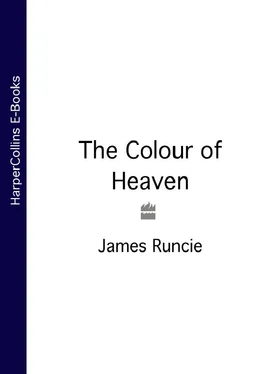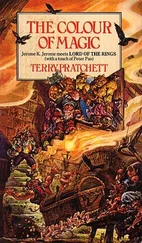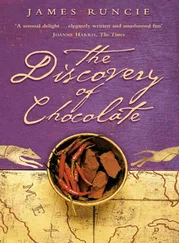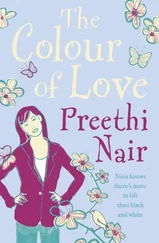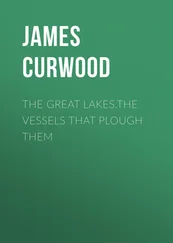‘I always follow the dominant light,’ he replied at last.
Paolo asked what colours the painter would be using, and how much gold leaf he could extract from a florin. If the Virgin’s cloak was to be blue then which particular blue might it be: cobalt, azurite, or indigo? Perhaps a glass amethyst might work as a clasp, but would he like it to be cut in any special way, faceted or made round?
The painter smiled. ‘How do you know such things?’ he asked.
Marco had entered the storeroom and was listening. ‘His eyes are not as others’.’
Simone turned to Marco. ‘He has extraordinary ability. He speaks of light and colour as if they were his greatest friends.’
‘They are all he knows.’
‘Are you happy here?’ The painter turned to Paolo.
‘Of course he is happy,’ Marco interrupted. ‘Why might he not be?’
‘I was only thinking.’
‘What?’ asked Paolo.
‘If you would like to come and work for me.’
‘Where?’
‘In Siena, of course.’ Simone turned to Marco. ‘Let me take him for a year. I will train him. He can cut and set the glass in my work.’
‘And you would pay him?’
‘Enough to live, of course,’ said Simone. ‘I am not a tyrant. I have work both in my own town and in Assisi. The life of St Martin. Windows and walls. It will be an adventure.’
Paolo could not quite believe what Simone had said.
‘Well?’ asked the painter. ‘You know stone and you know glass. If you really want to understand colour then you must also make paint. Grind it from the stone, gather it from the earth; coax it, blend it, mix it. The darkest indigo. The deepest alizarin. Infinite blue. There is nothing more exciting than letting colour reveal itself.’
It was the first time Paolo had been offered control of his destiny. ‘Can I choose?’ he asked Marco.
His father nodded.
‘Decide,’ the painter continued. ‘I will teach you. Together we will create a new earth and a new heaven.’
It would mean leaving all that he had known: the end of childhood.
‘I will come,’ said Paolo.
‘What will your mother say?’ asked Simone.
‘I think we should keep it from her,’ Marco answered. ‘She will not agree.’
Paolo tried to imagine the farewell. ‘If I have to say goodbye to her then I will never leave.’
‘So it is agreed. Not a word to your mother. Let us set out tomorrow,’ announced Simone. ‘Your life as an apprentice begins.’
As Marco had predicted, Teresa was furious. ‘What have you done, agreeing to such a thing?’ she railed.
‘It is the boy’s choice, not mine. I did not even suggest it.’
‘I don’t believe you. Paolo would not leave me in such a way.’
‘He has found employment, adventure. He may make us rich yet.’
‘If we live to see the day.’
‘It is only a year.’
‘Every day will seem a year. I will not know where he is or what he is doing, if he is happy or sad, hungry or thirsty, healthy or well. I will not know if he sleeps or no; nor will I be able to comfort him when he is anxious. You have to be a mother to know what it is when a son leaves.’
‘And you have to be a father to know when a boy is no longer a child. He is sixteen years old. He should be employed, married, away from us both.’
‘He is employed.’
‘Only because you do half his work.’
‘That is not true.’
‘You know that it is.’
Teresa left the house and walked along the fondamenta, past the church of Santo Stefano, and over the bridge towards the church of San Donato. She only stopped when she came to the edge of the island and looked out to sea, towards the Island of the Two Vines. There was a haze over the water. Everything seemed distant, blurred. This must be what it has always been like for Paolo, she thought.
She remembered finding him in the little rio on Ascension Day, the rescue from the monks and his work in the foundry; his strange blue eyes, and the way he looked at her as if he could never quite believe what he was seeing. It was a look of both trust and bewilderment. Only she knew it, as if such a look was meant only for her.
Who would look after him now?
As she walked by the shoreline and thought of her son, Teresa became convinced that her passionate concern was Paolo’s only protection.
She began to imagine every possible illness or accident that might befall him, because if she did so then perhaps such disasters might never happen.
Her head filled with all the ways in which her son might die.


It was August. Simone planned to journey south through Padua, Ferrara, and Bologna, over the foothills of the Apennines and then cross the River Arno to the east of Florence. They rode in the back of a cart through winding paths amidst sloping vineyards, collecting water from the wells of the small hill towns which studded their route. After eight days Paolo could just make out the silhouette of the city of Siena high in the distance, a huddle of ochre and deep brown, its buildings folding into each other, framed by crenellations of cypress and pine.
Simone’s workshop lay in the Contrada Aquila. It was situated in a spacious courtyard that opened beside a crowded narrow street. Here the apprentices were trained how to prepare the wood for devotional panels and altarpieces: washing, smoothing, and rubbing down each piece of poplar before applying the foundation of gesso. The more experienced amongst them worked on ornamentation: pressing tin and gold leaf, beginning to gild, burnish, pounce, punch, and stamp. Others employed on frescoes outside the workshop had already learned how to mark up a wall, to wet it down, plaster, true up, and smooth off.
Simone told Paolo that he must know every part of the process of painting: preparing charcoal for drawing, making brushes, paper, and pens, and collecting eggs with which to bind pigment and make the paint tempera mixture. He had to sift lime and sand, prepare plaster, smooth panels, and then, at last, when he fully understood the process, he would be allowed to work with colour.
‘What are you painting?’ asked Paolo.
‘Everything,’ replied Simone. ‘Alpha and Omega. The beginning and the end.’
‘You are painting heaven?’
‘And hell. Out of this humble earth. Can you believe it?’ The artist spoke like a showman addressing an audience. ‘I select each ingredient, like a wife at the market. I cook with paint.’ He crumbled a piece of ochre between his thumb and forefinger. ‘As a chef coaxes flavour so I encourage colour: with egg and tempera, red madder, and saffron. These are my ingredients and my spices.’ He flicked the paint away. ‘There is only one difference.’
‘And what is that?’
‘The meal I create is everlasting.’
Simone was happiest when he had an audience, and Paolo began to wonder if his apprentices were employed not only to undertake the menial tasks which their master had outgrown, but also to provide constant attention, ever ready to laugh at his wit. Keeping Simone amused was almost half of the work because he could be plunged into depression at any moment, such was the fragility of his confidence and, Paolo noticed, his fondness for wine. The man could move from exhilaration to despair in an instant, which made all those who worked for him both nervous and watchful.
At times Simone would throw down his brush, leaving the workshop to drink with his friends, returning too inebriated to continue. He would then compensate for such wildness by working without stopping for thirty-six hours. Talented, unpredictable, and easily distracted, he sometimes gave his pupils astonishing bursts of responsibility.
Читать дальше
